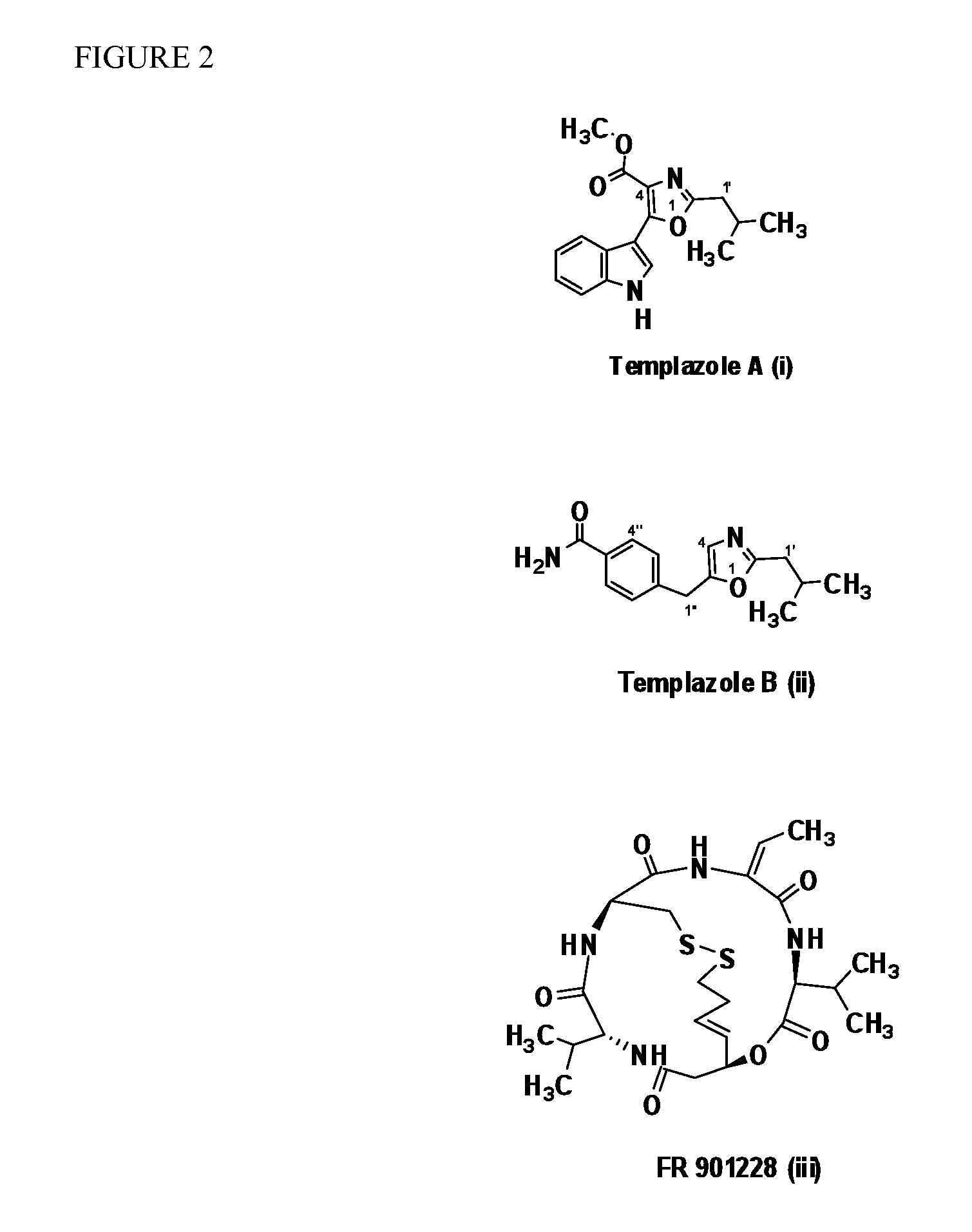Plant glutamine synthetase inhibitors and methods for their identification
a glutamine synthetase inhibitor and plant technology, applied in the field of identification of plant glutamine synthetase inhibitors, can solve the problems of direct affecting the survivability of plants, plant resistance to the standard arsenal of herbicides, and plant resistance naturally developing
- Summary
- Abstract
- Description
- Claims
- Application Information
AI Technical Summary
Benefits of technology
Problems solved by technology
Method used
Image
Examples
example 1
Isolation and Identification of the Microbe
Isolation of the Microorganism
[0094]The microbe is isolated using established techniques known to the art from a soil sample collected under an evergreen tree at the Rinnoji Temple, Nikko, Japan. The isolation is done using potato dextrose agar (PDA) using a procedure described in detail by Lorch et al., 1995. In this procedure, the soil sample is first diluted in sterile water, after which it is plated in a solid agar medium such as potato dextrose agar (PDA). The plates are grown at 25° C. for five days, after which individual microbial colonies are isolated into separate PDA plates. The isolated bacterium is gram negative, and it forms round, opaque cream-colored colonies that change to pink and pinkish-brown in color and mucoid or slimy over time.
Identification of the Microorganism
[0095]The microbe is identified based on gene sequencing using universal bacterial primers to amplify the 16s rRNA region. The following protocol is used: Bur...
example 2
Inactivation of Burkholderia Whole Cell Broth
[0110]Based on the results from the heat kill time course study for the inactivation of (Burkholderia sp. strain A396) a heating period of 60 minutes at 60° C. was selected for testing the Burkholderia sp inactivation in ten 10-liter production batch. The production fermentation culture was grown for 48 hours in ten 10-liter water-jacketed glass production fermenters. After 48 hours, the temperature set point was increased to 60° C. to initiate heating. The water in the fermenter jacket was heated via an internal heating loop in the system to raise the temperature of the fermenter culture up to the set point. A 150 ml sample was aseptically removed in triplicate from each fermenter prior to initiation of heating and at 60 minutes after the temperature of the culture reached 60° C. The total time it took to heat the culture to 60° C. was 59 minutes. The 150 ml samples were placed in 250 ml sterile Nalgene containers and stored at room temp...
example 3
Isolation of Fractions and Substances from Heat Inactivated Burkholderia A396
[0111]Methods and Materials
[0112]The following procedure is used is set forth in FIG. 1.
[0113]The culture broth derived from the 10-L fermentation Burkholderia (A396) in Hy soy growth medium is extracted with Amberlite XAD-7 resin (Asolkar et al., 2006) by shaking the cell suspension with resin at 225 rpm for two hours at room temperature after the fermentation is inactivated using the procedure set forth above. The resin and cell mass are collected by filtration through cheesecloth and washed with DI water to remove salts. The resin, cell mass, and cheesecloth are then soaked for 2 h in acetone after which the acetone is filtered and dried under vacuum using rotary evaporator to give the crude extract. The crude extract is then fractionated by using reversed-phase C18 vacuum liquid chromatography (H2O / CH3OH; gradient 90:10 to 0:100%) to give 11 fractions. These fractions are then concentrated to dryness us...
PUM
 Login to View More
Login to View More Abstract
Description
Claims
Application Information
 Login to View More
Login to View More - R&D
- Intellectual Property
- Life Sciences
- Materials
- Tech Scout
- Unparalleled Data Quality
- Higher Quality Content
- 60% Fewer Hallucinations
Browse by: Latest US Patents, China's latest patents, Technical Efficacy Thesaurus, Application Domain, Technology Topic, Popular Technical Reports.
© 2025 PatSnap. All rights reserved.Legal|Privacy policy|Modern Slavery Act Transparency Statement|Sitemap|About US| Contact US: help@patsnap.com



